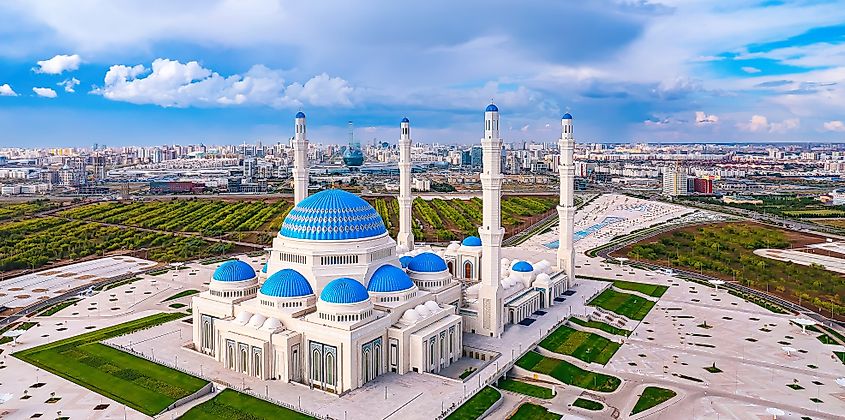10 Countries That Seem Wealthy But Are Extremely Poor
Appearances can be deceiving, especially when evaluating the economic status of a country. Many nations exude an aura of prosperity through their glittering skyscrapers, advanced infrastructure, and global branding, yet a deeper look reveals the harsh reality of widespread poverty, inequality, and systemic challenges. This disparity often arises from skewed wealth distribution, reliance on volatile industries, or debt-ridden economies. 
This article explores ten countries that outwardly appear wealthy but are grappling with deep-rooted poverty and systemic instability.
The Illusion of Wealth: Economic Facades vs. Reality
Several nations cultivate the image of wealth, leveraging their capital cities, landmarks, or booming sectors to craft an international identity of affluence. However, the wealth on display often benefits only a fraction of the population.
Urban vs. Rural Divide:
For many countries, metropolitan areas showcase advanced infrastructure and high living standards, masking rural poverty.
Wealth Concentration:
A small elite class frequently controls a disproportionate share of resources, while the majority struggle to meet basic needs.
Fragile Economies:
Some nations rely heavily on industries like oil, tourism, or finance, making them vulnerable to global market fluctuations.
Case in Point
Countries like Nigeria, with its booming oil sector, or India, a tech giant, exhibit these characteristics. Yet, beneath the surface lies economic fragility and large populations living below the poverty line.
Unveiling the Paradox: Countries Masking Poverty with Opulence
Certain countries are global symbols of prosperity yet fail to meet the basic needs of their citizens. Here’s a closer look at some of these paradoxes.
Venezuela
Once one of South America’s wealthiest nations due to its vast oil reserves, Venezuela’s economy has spiraled into one of the most severe crises in modern history. Hyperinflation, food shortages, and lack of medical supplies plague a nation that still boasts some of the world’s largest oil deposits. The juxtaposition between the wealth of resources and the plight of its citizens is stark.
Saudi Arabia
Known for its gleaming skyscrapers and luxurious lifestyle in cities like Riyadh, Saudi Arabia’s image of wealth is largely built on oil revenues. Yet, outside of these urban centers, poverty is pervasive. Many citizens lack access to affordable housing, education, and healthcare. With the economy overly reliant on oil, the nation faces immense challenges in diversifying its economy.
South Africa
A country with immense natural resources and vibrant cities like Johannesburg and Cape Town, South Africa grapples with stark inequality. The legacy of apartheid still looms large, with a small percentage of the population enjoying prosperity while millions live in informal settlements without access to basic services.
Russia
Russia often portrays itself as a global powerhouse, with vast natural resources and a strong military presence. However, significant portions of the population live in poverty, especially in rural areas. The wealth disparity between oligarchs and ordinary citizens is one of the widest globally.
The Role of Mismanagement and Structural Inequality
In many cases, the illusion of wealth stems from systemic issues rooted in governance and economic management. Here’s why some nations struggle despite their apparent riches:
Corruption
Widespread corruption undermines economic stability. Public funds are often siphoned off by powerful elites, leaving insufficient resources for social services and infrastructure.
Debt Dependency
Several countries rely heavily on foreign loans to sustain their economies, creating a cycle of debt that prevents real growth.
Resource Curse
Economies reliant on single resources, like oil or minerals, often suffer from volatility. When prices drop, these nations face severe economic downturns.
Countries like Nigeria and Angola serve as prime examples. Despite rich natural resources, they struggle with corruption and economic mismanagement, leading to widespread poverty.
What Lies Beneath the Surface: The Social Impact of Hidden Poverty
The disparity between perceived and actual wealth has far-reaching consequences, particularly for the most vulnerable populations.
Education and Healthcare Gaps
Many of these nations underfund critical sectors, leaving large portions of the population without access to quality education or healthcare.
Urbanization Challenges
Rapid urbanization creates slums and strains resources in cities, while rural areas remain neglected.
Social Unrest
Inequality and poverty often lead to protests, instability, and, in extreme cases, conflict.
Take Brazil as an example. Known for its vibrant culture and economic strength, millions live in favelas, with limited access to essential services.
Conclusion
The contrast between apparent prosperity and actual poverty highlights the complexities of global economics. For these nations, tackling corruption, diversifying economies, and investing in social services are essential steps toward sustainable growth. While glittering cities and thriving industries may capture the world’s attention, true wealth lies in the well-being of a nation’s people. Recognizing these disparities is the first step toward addressing the systemic issues that perpetuate them.
References
- The Guardian on Venezuela's Economic Crisis
- World Bank on Global Inequality
- IMF Report on Resource-Dependent Economies
- Transparency International Corruption Index
- Al Jazeera Analysis on Saudi Poverty
- UNESCO Reports on Education Inequality
- South Africa’s Inequality Challenge
- Brazil’s Urban Challenges
- Russia’s Poverty Levels
- Nigeria’s Resource Curse
























